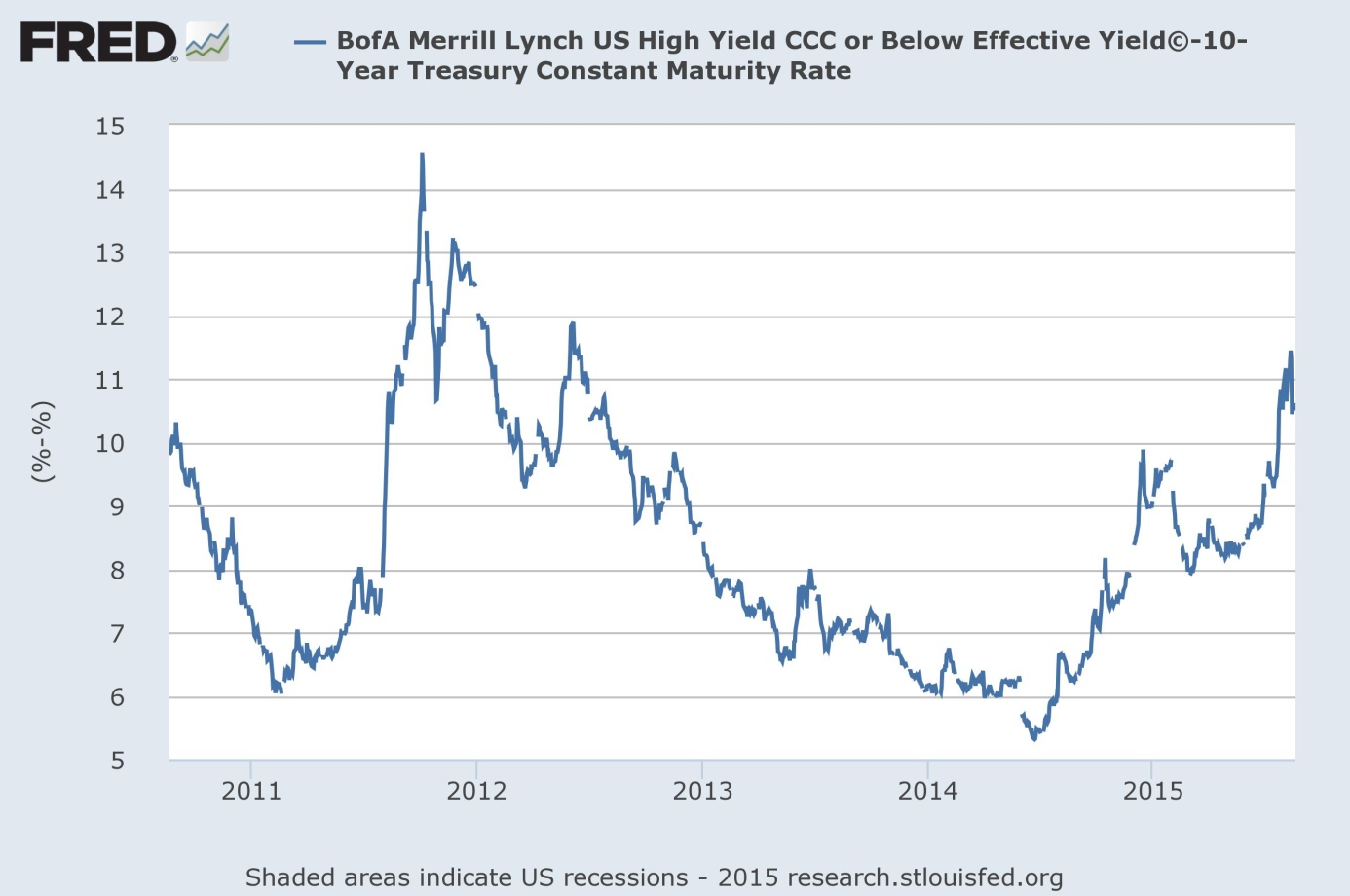Recently, the yields on the riskiest junk bonds have been rising. What does it mean for the U.S. economy and the gold market?
According to Reuters, the U.S-based high-yield bond funds reported $1.2 billion in outflows for the week ended August 12, marking the third straight week of outflows. As a result, the spread on corporate bonds versus safer, more liquid instruments like U.S. Treasury notes widened. The yields at the riskiest end of the junk bond market (bonds rated CCC and below) rose from around 10 percent in February to 13.58 percent on August 13. The spread between these bonds and less risky securities with a given investment grade rating BB widened from around 5.5 to 8 percent. And as you can see in the chart below, the spread between bonds rated CCC and below and 10-year Treasury bonds widened from around 7.9 in February (or 5.32 in June 2014) to 11.44 on August 12.
Chart 1: The spread between corporate bonds rated CCC and below and 10-year Treasury bonds from 2010 to 2015.

What do the rising yields on junk bonds mean for the global economy and the gold market? Well, the widening spreads between these bonds and less risky securities indicate that investors flee to safer instruments. If history is any indication, this may be a sign of a looming financial crash. During the summer of 2008, junk bond prices plunged as yield skyrocketed. Everybody knows what happened a few months later. Sure, the history does not necessarily repeat itself, but there are also other similarities to the great financial collapse, like the plunging price of copper. We have already seen that the global stock markets are rather fragile right now. If the crisis scenario happens, the price of gold will rise. Anyhow, hiking interest rates when yields on junk bonds are rising is not a good idea and it would just add fuel to the outflows from the junk bond market.
Summing up, the U.S. credit spreads are widening. This development should be bullish for gold, as the widening spreads reflects less risk appetite and more intense pursuit of safety. As it may signal the next financial crisis, it lowers the possibility of the Fed’s interest hike, which is also positive news for the gold market. However, stocks are stabilizing after the panic sell-off, so gold may come back down in the short-term.
If you enjoyed the above analysis, we invite you to check out our other services. We focus on the fundamental analysis in our monthly Market Overview reports and we provide daily Gold & Silver Trading Alerts with clear buy and sell signals.
Thank you.
Arkadiusz Sieron
Sunshine Profits‘ Gold News Monitor and Market Overview Editor
Gold News Monitor
Gold Trading Alerts
Gold Market Overview



